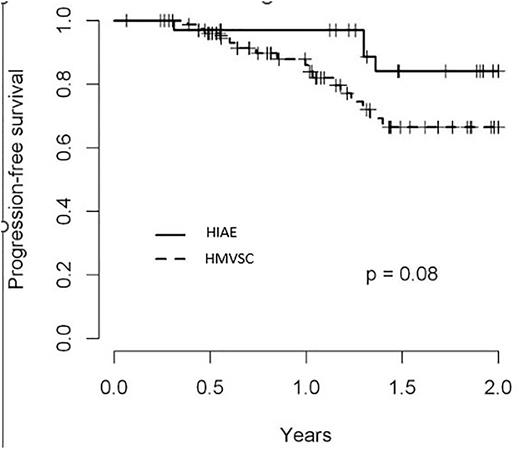Abstract
Introduction: Brazil is considered by the World Bank as a Low/Middle-income country (LMIC). In Brazil, most of the population relies on universal public system, with only about 20% of patients able to afford private healthcare. Patients on the public system tend to have delayed diagnosis and access to treatment, and the impact of delay in cancer patients is unknown. Since 2018, Hospital Israelita Albert Einstein (HIAE), a private hospital in Sao Paulo, runs a public Lymphoma Clinic, receiving around 200 new cases/year. Both centers are less than 10km away, and both share most resources, including laboratory, pathology, imaging, pharmacy and medical team. We aimed to evaluate the difference in progression-free survival (PFS) in Hodgkin Lymphoma patients from both public and private systems sharing the same infrastructure. Methods: Patients with newly diagnosed cHL between January 2018 to January 2022 were included in this retrospective analysis, both from Hospital Israelita Albert Einstein (HIAE, private hospital) and Hospital Municipal da Vila Santa Catarina (HMVSC, public hospital). All biopsies were centrally reviewed at HIAE, and all laboratory and imaging were also done at HIAE. All patients were submitted to interim PET-CT after two cycles of ABVD ABVD (doxorubicin, bleomycin, vinblastine, and dacarbazine), and response-adapted therapy was defined by assistant physician choice. All patients were also evaluated by PET/CT at the end of therapy. Survival rates were estimated by Kaplan-Meier and differences were assessed by a log-rank test. Univariate associations were derived via Cox model with variables P≤0.05 entered into a multivariable model. Results: There were 120 newly diagnosed cHL (40 in private, 80 in public center) and the median follow-up was 16 months. The median age at diagnosis was 36 years (19 to 81) with a male predominance (60%) and 95% presented with an ECOG performance status of 0-1. There was a significant difference in disease stage between HIAE and HMVSC: 55% (22/40) in private institution were at early stage versus only 20% (16/80) in the public center. Furthermore, 80% of patients in the public center were classified as unfavorable. In advanced stage, we observed 87% (56/64) of extranodal involvement in the public center. The progression-free survival at 2 years was 85% (private) versus 66% (p=0.08) (public). The only risk factor associated with inferior PFS was the number of involved extranodal sites (HR = 2.33, p = 0.004 for each extranodal site involvement). There was only 1 patient in the private institution with more than 1 extranodal site involved. Conclusion: Despite improvement in the Outcomes of HL patients, we showed that delayed diagnosis/access to health care had impacted in the disease presentation of patients, with a trend to inferior PFS in this population, even when confounding factors (such as infrastructure) are eliminated. Patients in the public system presented more often at advanced stage, risk factors, and extranodal involvement.
Disclosures
No relevant conflicts of interest to declare.
Author notes
Asterisk with author names denotes non-ASH members.


